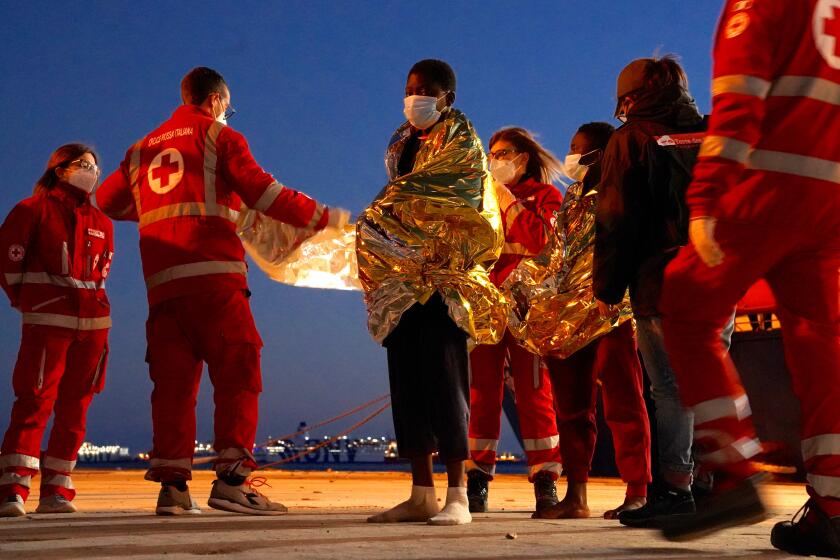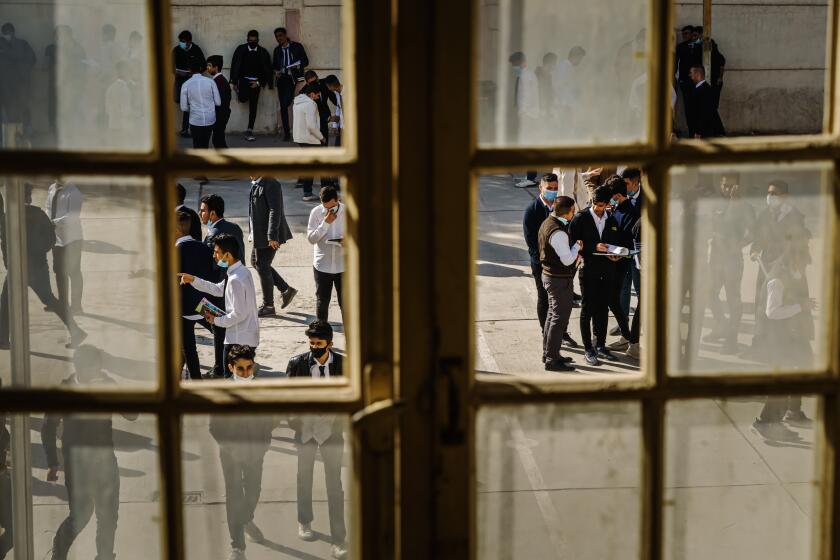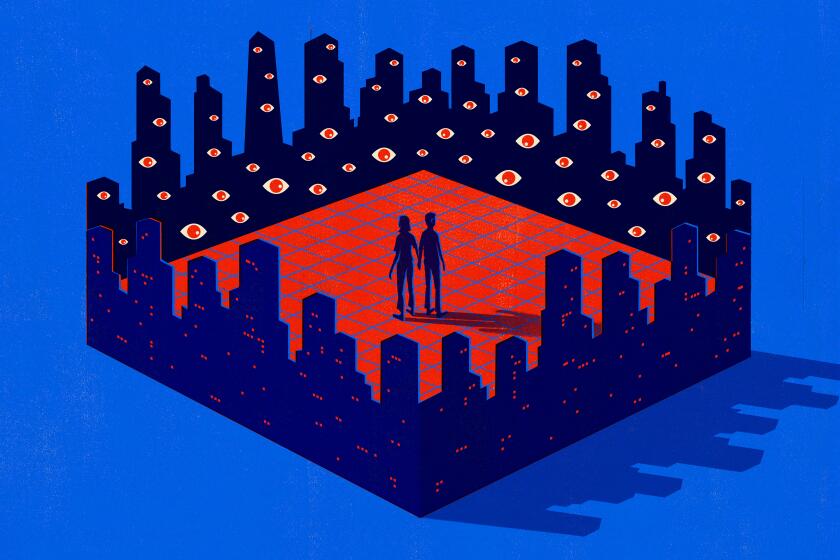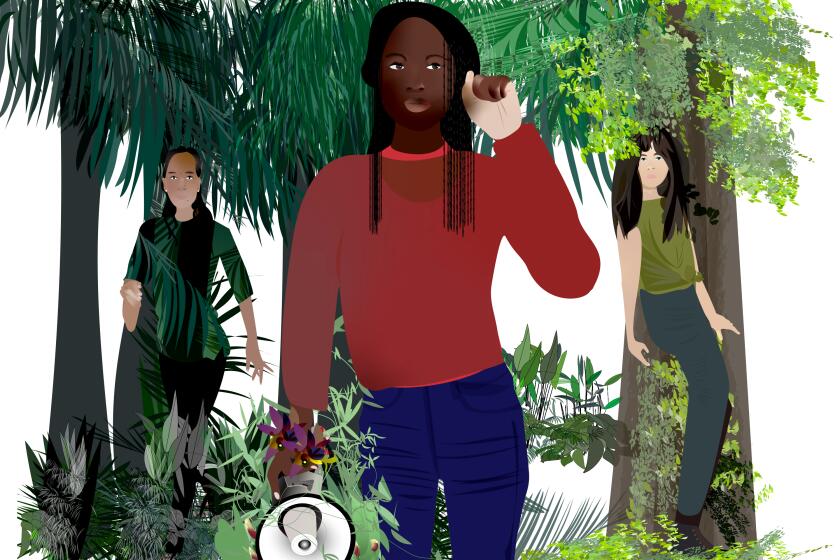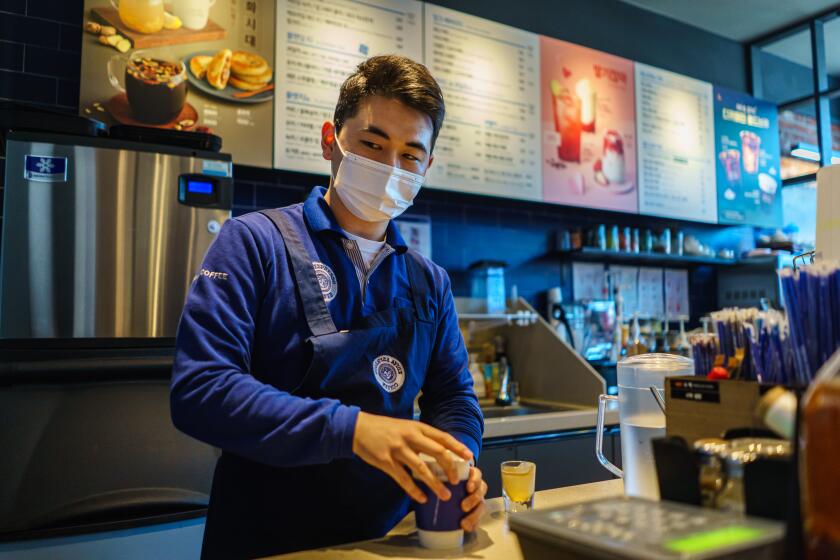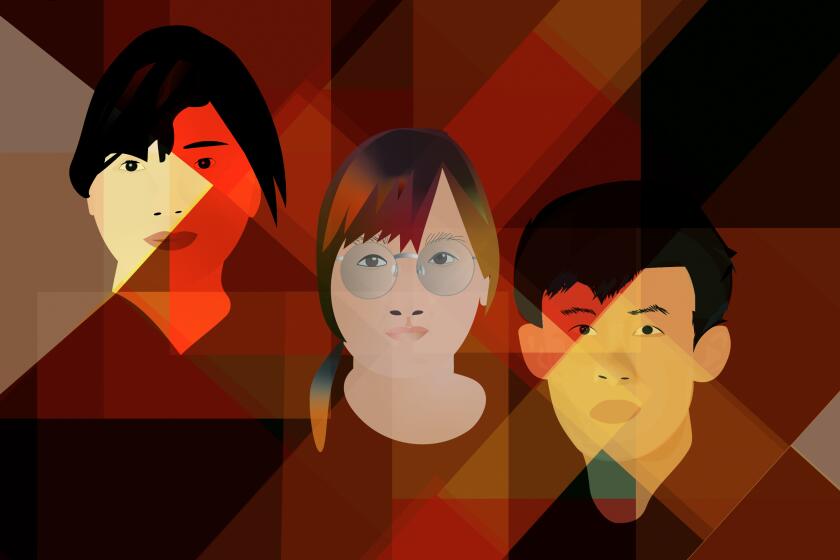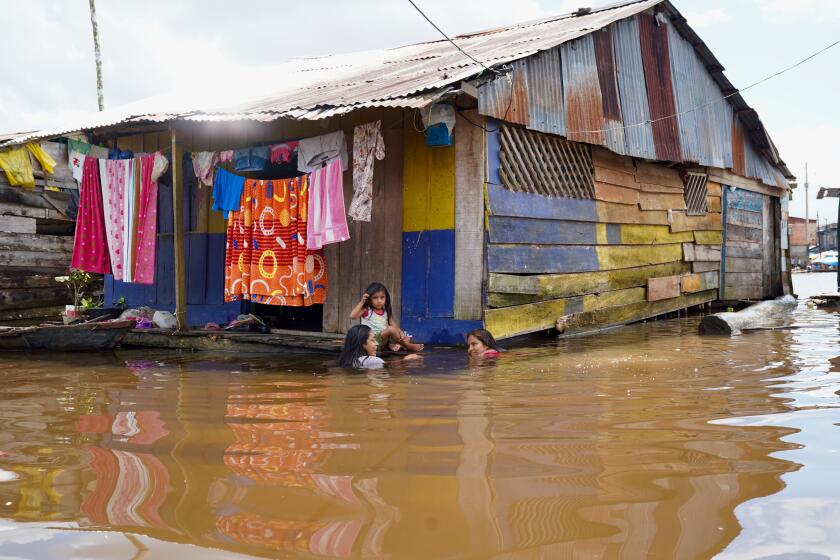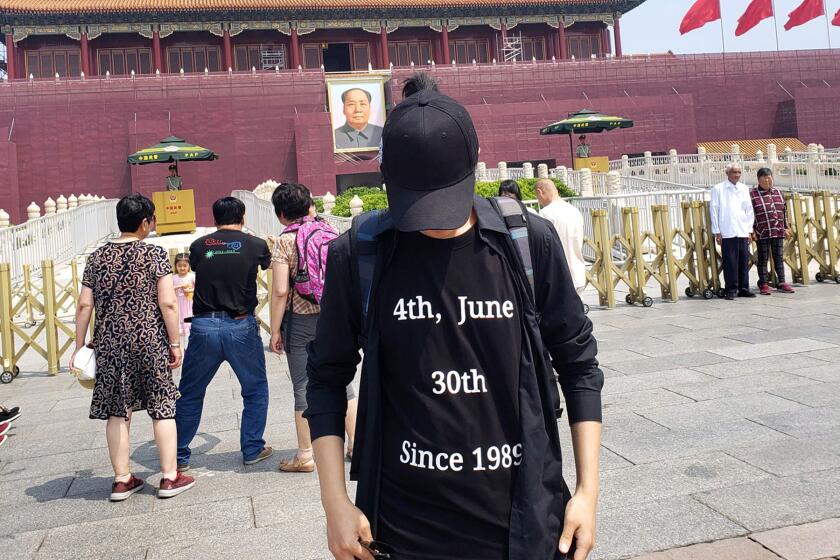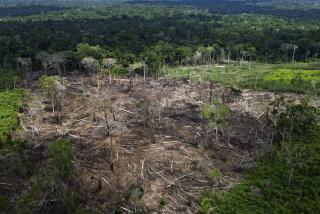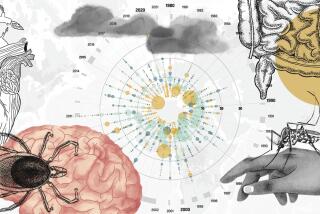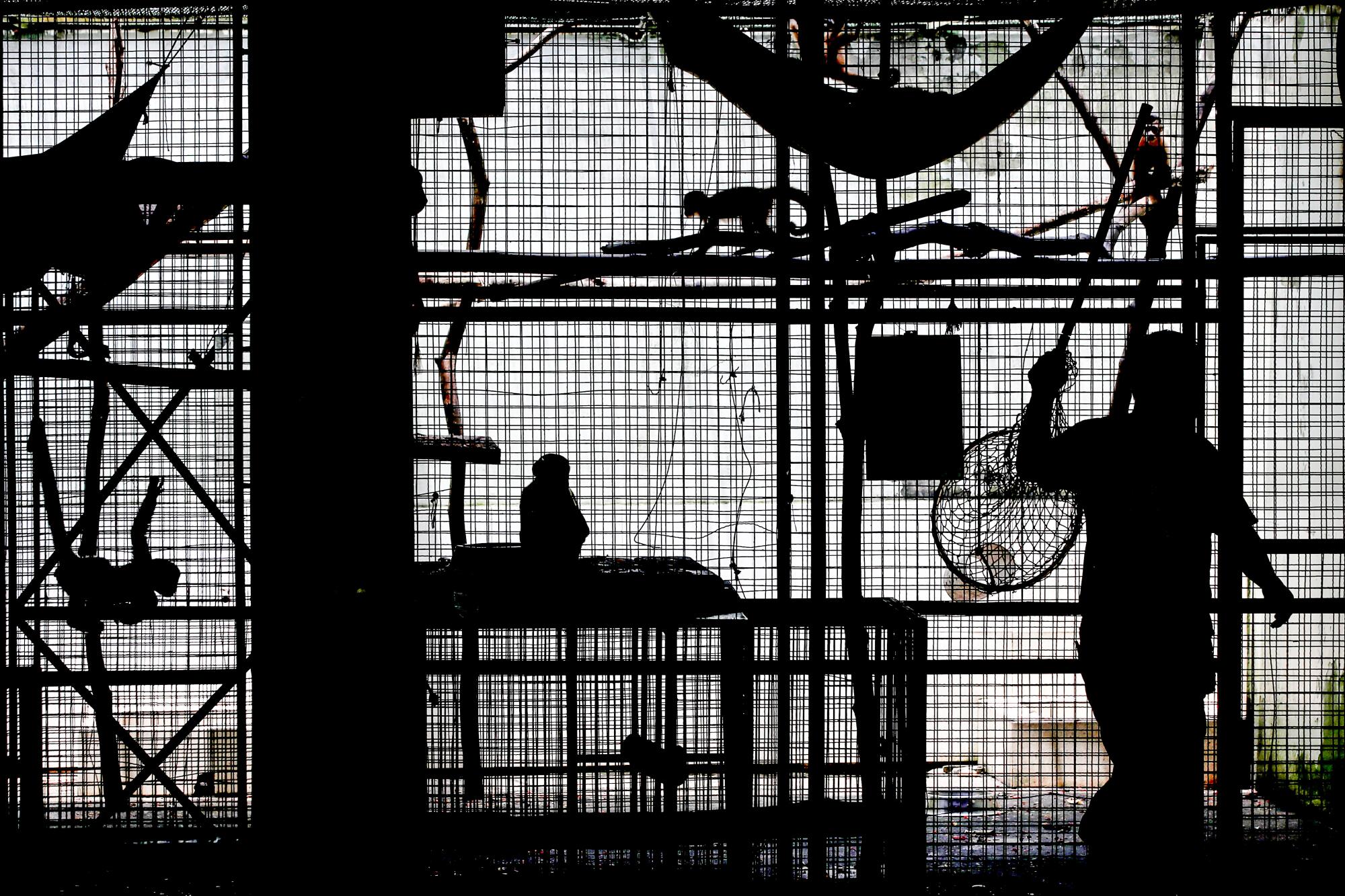
MARUAGA, Brazil — The 10-year-old took off running down a dirt road in the heart of the Amazon rainforest, turning cartwheels, playing tag and picking fistfuls of wild bougainvillea.
Small fires flared all around Darah Lady Assunção Oliveira da Costa and her young cousins as men burned trees to make room for more farmland. On the horizon loomed what was left of still-virgin jungle, dense and impossibly green. A chain saw roared from within.
In the three decades since Darah Lady’s widowed grandmother first arrived in this remote stretch of northern Brazil, clearing the jungle by hand to build a house for her 14 children, the family has pushed deeper and deeper into the Amazon. It has been driven by the frontier maxim that prosperity comes when nature succumbs to human dominion.
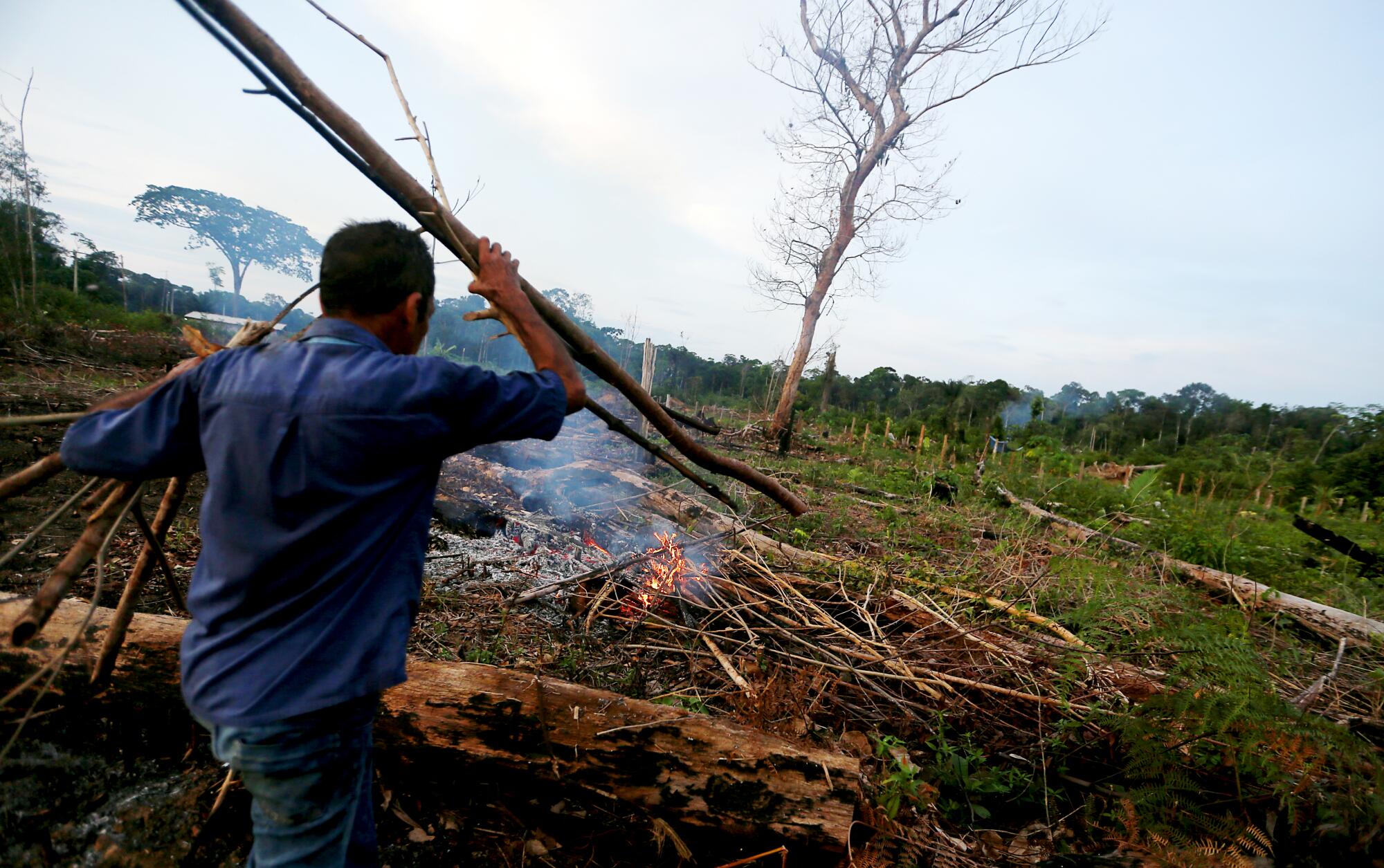
“To survive, we need to use what we have,” said Darah Lady’s father, 60-year-old Aladino Oliveira da Costa, who toppled old-growth forest to build homes for each of his four older children.
He and the rest of the community have been prepping Darah Lady and her 42 cousins for life on the literal edge of civilization, teaching them which insects to avoid, which plants cure colds and which wild animals can be hunted and eaten.
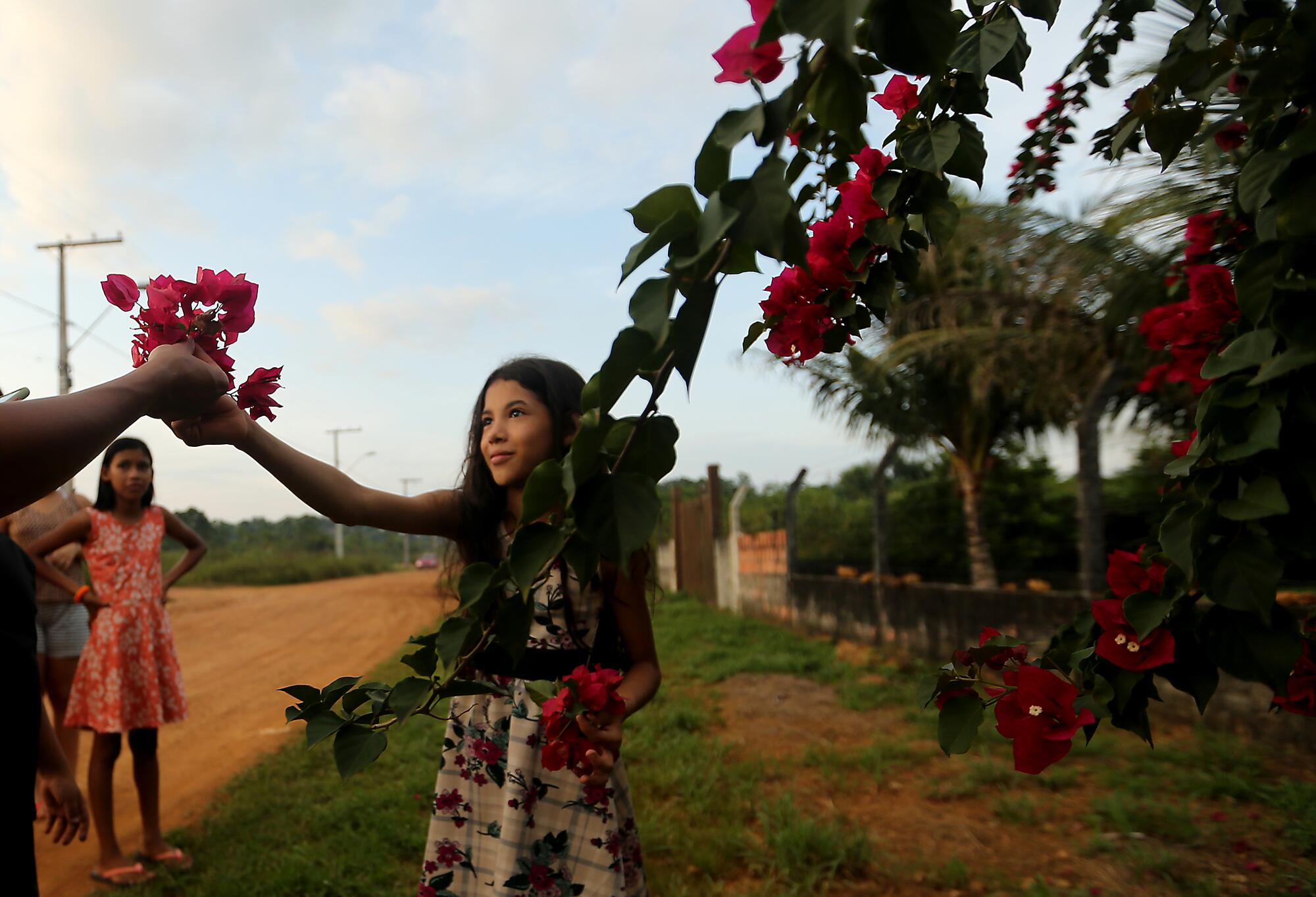
Yet their growing outpost in northeastern Amazonas state — one of thousands of informal settlements throughout the world’s largest rainforest — could imperil not only their children’s future but also that of the entire planet.
It’s not just about trees. It’s about viruses.
More global pandemics like COVID-19 are on the way, scientists say, and the next one is likely to emerge from a community like Darah Lady’s, where people are encroaching on the natural world and erasing the buffer between themselves and habitats that existed long before a shovel cut this earth.
The World They Inherit
This is the sixth in a series of occasional stories about the challenges young people face in an increasingly perilous world. Reporting was supported by a grant from the Pulitzer Center.
From palm oil cultivation in Malaysia to mining in Africa or cattle ranching in Brazil, as people demolish forest, they not only accelerate global warming but also dramatically increase their risk of exposure to disease. Lurking in mammals and birds are about 1.6 million viruses, some of which will be deadly when they leap to humans. The stakes turn catastrophic if a virus proves transmissible between people.
That’s what happened with COVID-19, which originated from close contact between humans and wild animals — whether it sprung from a natural setting or a laboratory.
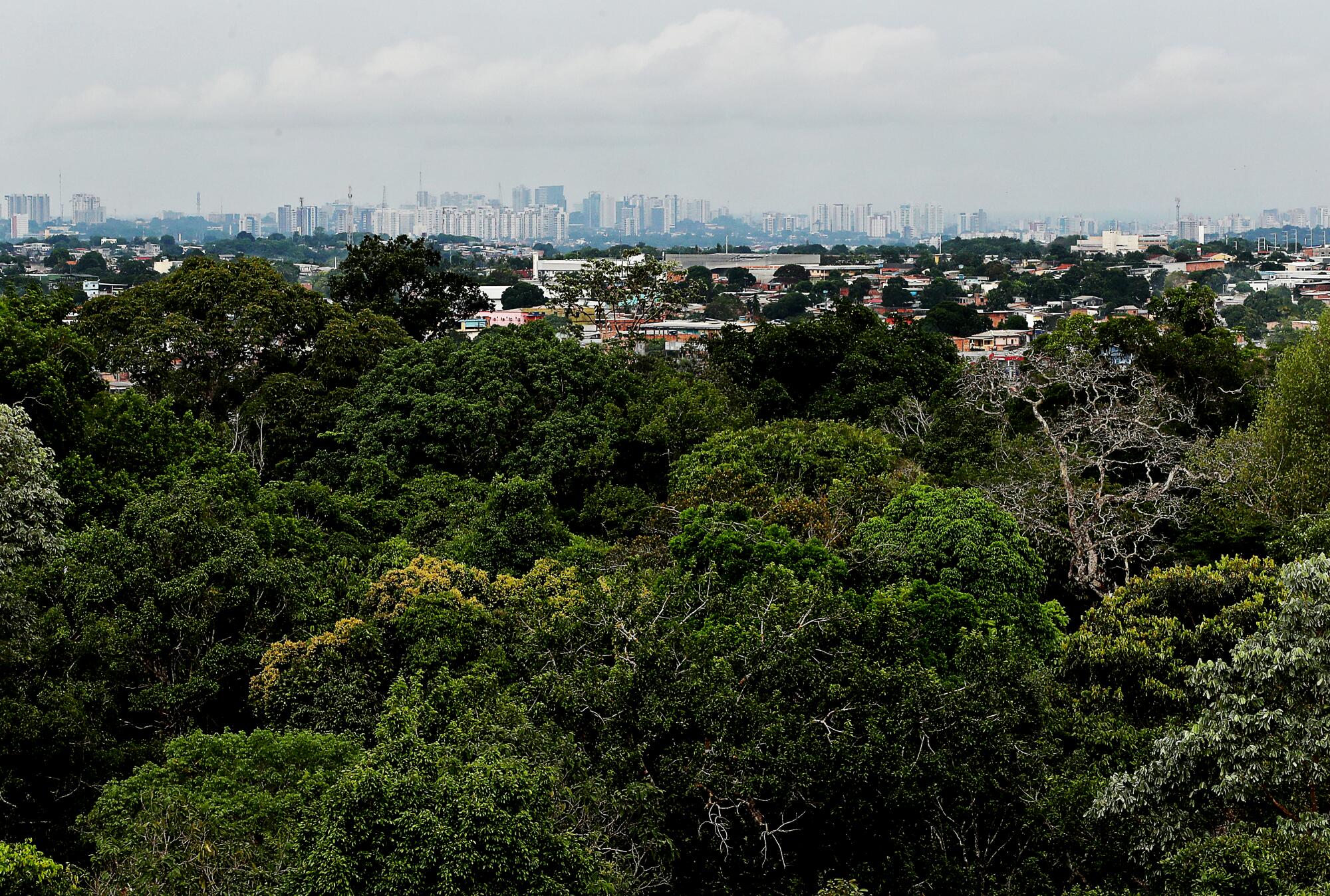
Scientists say that disease hot zones are multiplying from Africa to South America, and that deforestation has already triggered a rise in infectious disease. Zoologists have traced about a third of all known outbreaks around the world to rapid land use change, including Nipah virus, malaria and Lyme disease. The problem is worsened by warmer temperatures brought by climate change that allow disease-carrying insects to flourish.
Brazil has lost 270,000 square miles of the rainforest — the size of two Germanys — since 1970. Darah Lady’s hamlet of Maruaga is rife with risks for viral spillover, from omnipresent mosquitoes, roaming dogs and chickens, and the wild game her family regularly eats. Infected bushmeat consumption probably sparked the 2013 Ebola outbreak in the West African country of Guinea.
“Oh, it’s delicious!” Darah Lady said of paca, a hunched, striped rodent that lives in the forest, as she and her cousins stopped to say hello to her father, who was smoothing mortar between concrete blocks, adding a new room to their two-story house.
“But you can’t go overboard with the pepper,” Darah Lady continued. “There was this one time when he went to prepare the paca” — she stuck her tongue out and panted — “and it was so hot!”
Her father, long-limbed and quick-witted like his daughter, smiled, putting his arm around the girl’s narrow shoulders. “And tapir,” he added, referring to a jungle mammal that resembles a large pig with a trunk. “They are also really good.”
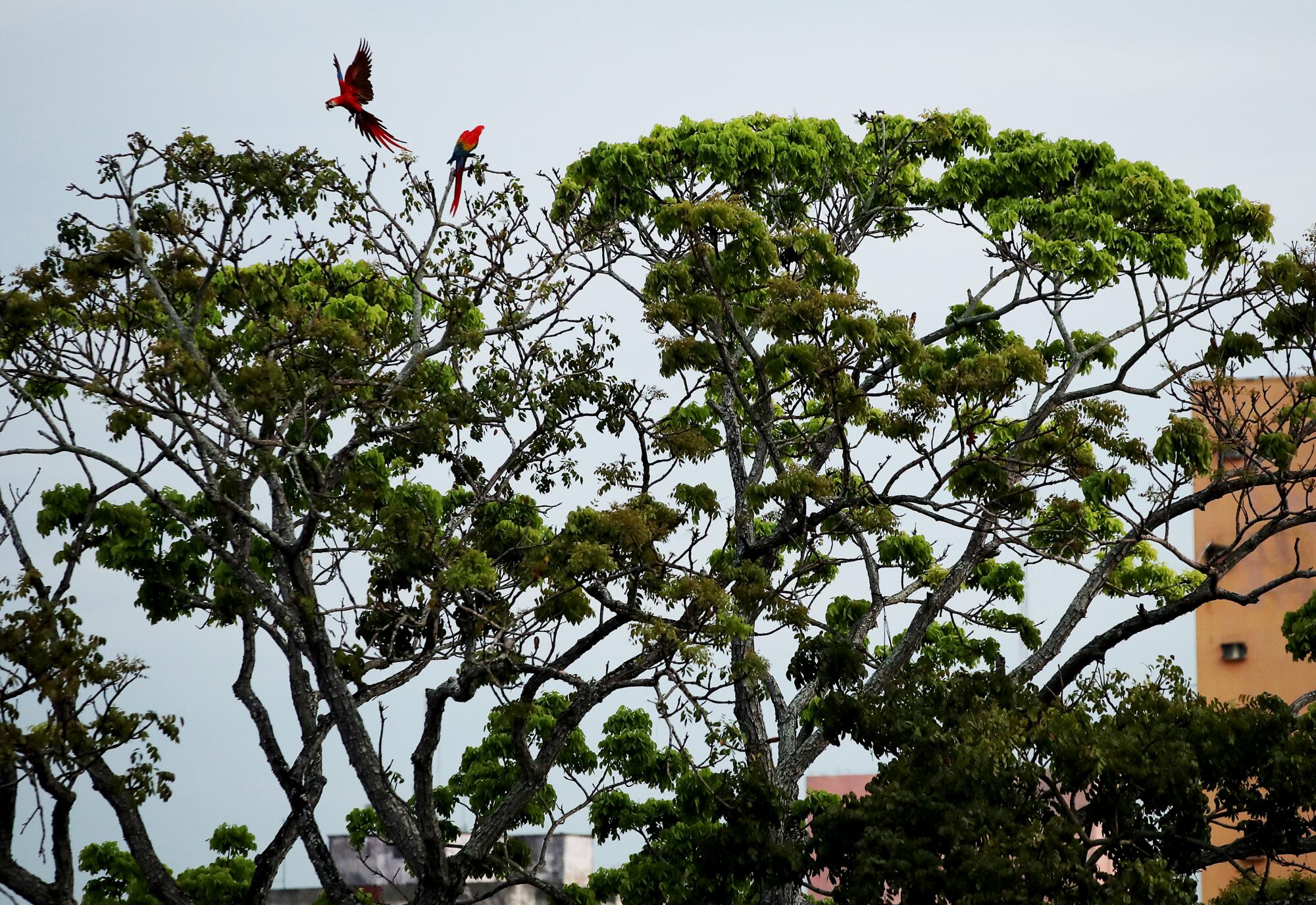
Their family has already battled zoonotic illnesses — the term used to describe infectious diseases transmitted between animals and humans. Darah Lady’s father is a survivor of malaria and Leishmaniasis, a disease carried by sand flies that causes flesh-eating skin sores.
When 40% of a land area has been destroyed, according to Tom Gillespie, an Emory researcher focused on environmental change and disease, the region hits a sort of tipping point: Wild animals are pushed closer to humans for food, and viruses begin to spread.
Even small decreases in forest cover can drive up exposure to pathogens. In Brazil, Zika, the mosquito-borne virus that causes devastating birth defects, is a prime example. Scientists say deforestation has contributed to record heat and droughts that cause more people to store water in open containers — excellent breeding grounds for mosquitoes. With global warming, these vectors will probably creep north, breeding in parts of North America, Europe and East Asia where it had previously been too cold.
It is likely Darah Lady will confront another pandemic in her lifetime. But her family isn’t worried. When COVID-19 swept through the Amazon, her relatives say they survived by sipping tea made with the bark of a forest vine. Darah Lady’s grandmother Iracema, 81, went into the jungle to collect the ingredients.
“It’s something that God put on the face of this Earth,” Darah Lady’s aunt Ivaneide Assunção da Silva said of the virus. “And God gave us the tools to cure ourselves.”
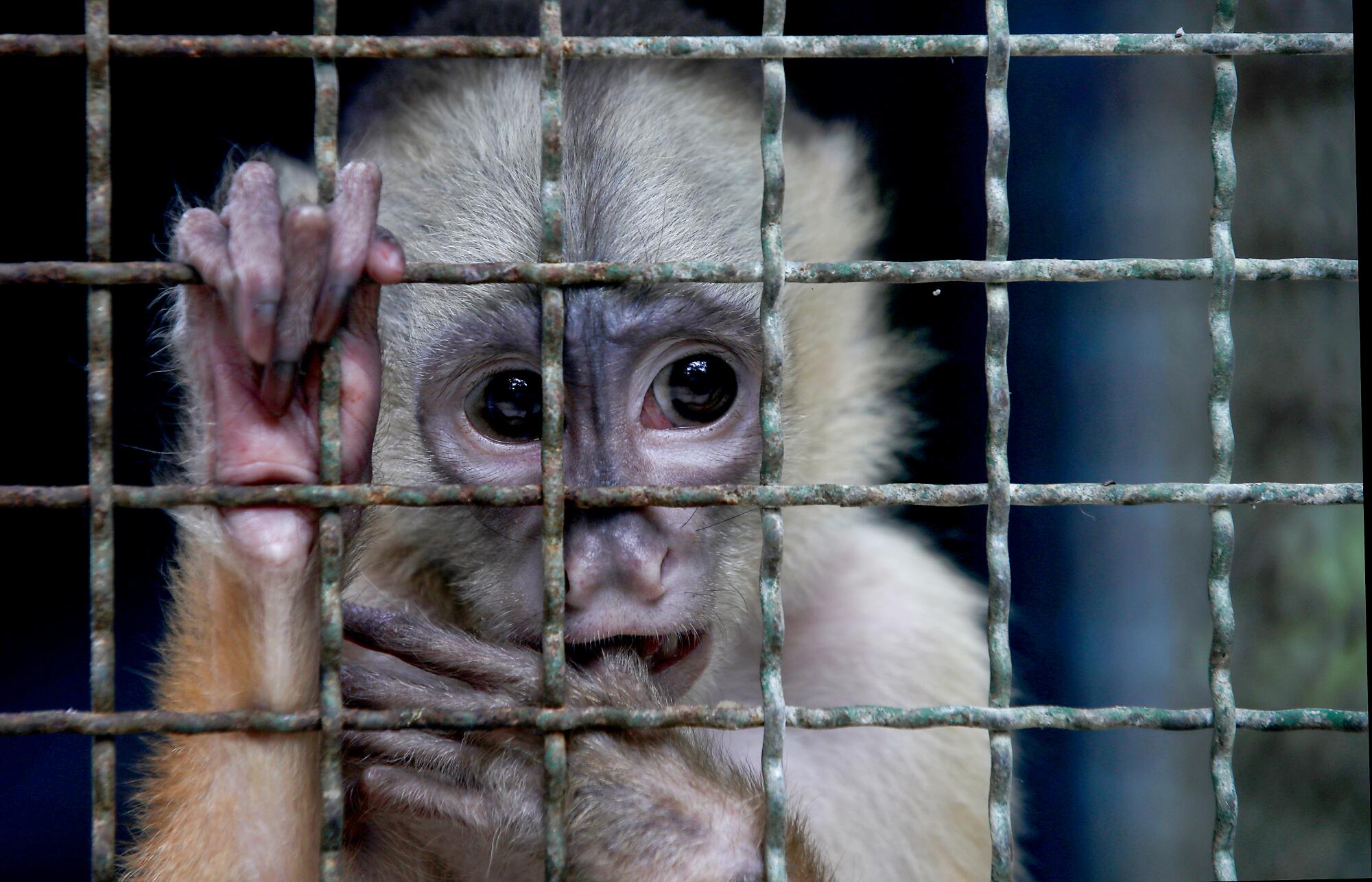
The community here revolves around the small neo-Pentecostal church Iracema helped build. The church’s national leaders have claimed that the coronavirus is caused by Satan and will not hurt those who are not afraid of it. The whole family has declined to take the vaccine.
Iracema believes the family will meet any challenge, even a future pandemic, with the help of God — and the fruits of the forest.
“It’s important to know about the forest,” she said. “Because, when we live here, there’s no one to help us. We’ve always been here fending for ourselves.”
::
One hundred miles south of Maruaga, in the sprawling city of Manaus, a cemetery edges up against the rainforest, a sea of fresh wooden crosses giving way to a seemingly endless thicket of trees.
During the worst of the COVID-19 pandemic, when hospitals in Manaus ran out of oxygen and doctors could do no more than prescribe morphine to patients as they slowly asphyxiated, workers razed acres of jungle so backhoes could dig mass graves for thousands of dead.
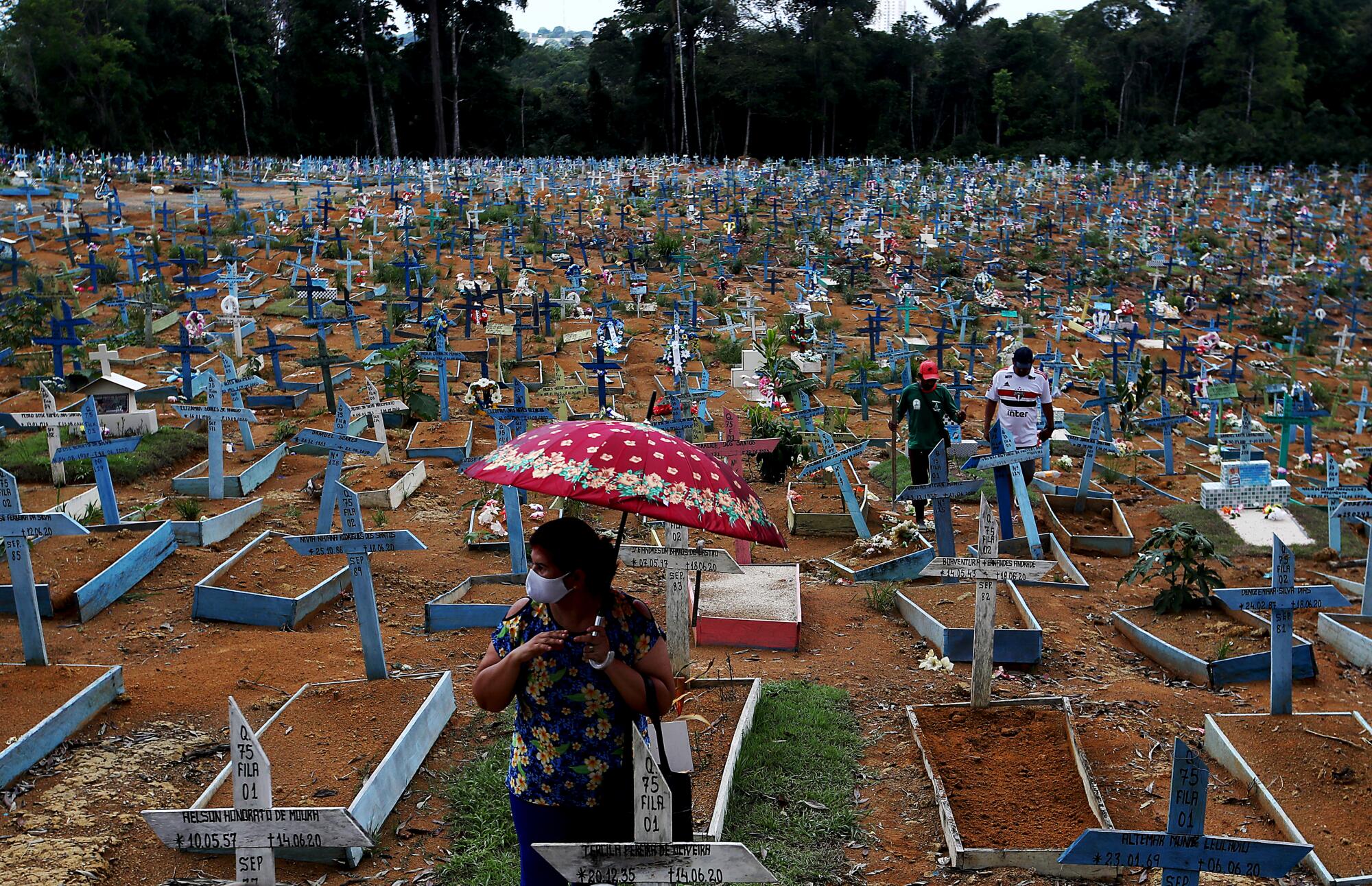
If there’s any place in the world that understands just how devastating a pandemic can be, it is Manaus, a city of 2 million that rises out of the forest along a tributary of the Amazon River. Scientists are concerned Manaus could also be the breeding ground for the next global epidemic, and say its poor performance responding to COVID-19 suggests it is nowhere near ready for what may come.
“We were not prepared,” said nursing assistant Ludernilce Peixoto Costa, 43, who works at one of the city’s main hospitals treating COVID-19 patients. Peixoto lost both of her parents to COVID-19. In the ICU where she works, her father died holding her hand.
She worries about her youngest brother, 16, who has become increasingly withdrawn — another COVID-19 orphan in a city full of them. She worries, too, about her 6-year-old daughter, Adrielly, who can’t remember a life before protective masks and who says she wants to be a doctor one day because she has known so many sick people.
Peixoto wonders: What if the virus never really goes away, or another one appears, and the young have to live with pandemics forever?
“It scares me a lot,” Peixoto said on a recent morning after another exhausting night shift. “It’s an uncertain future.”
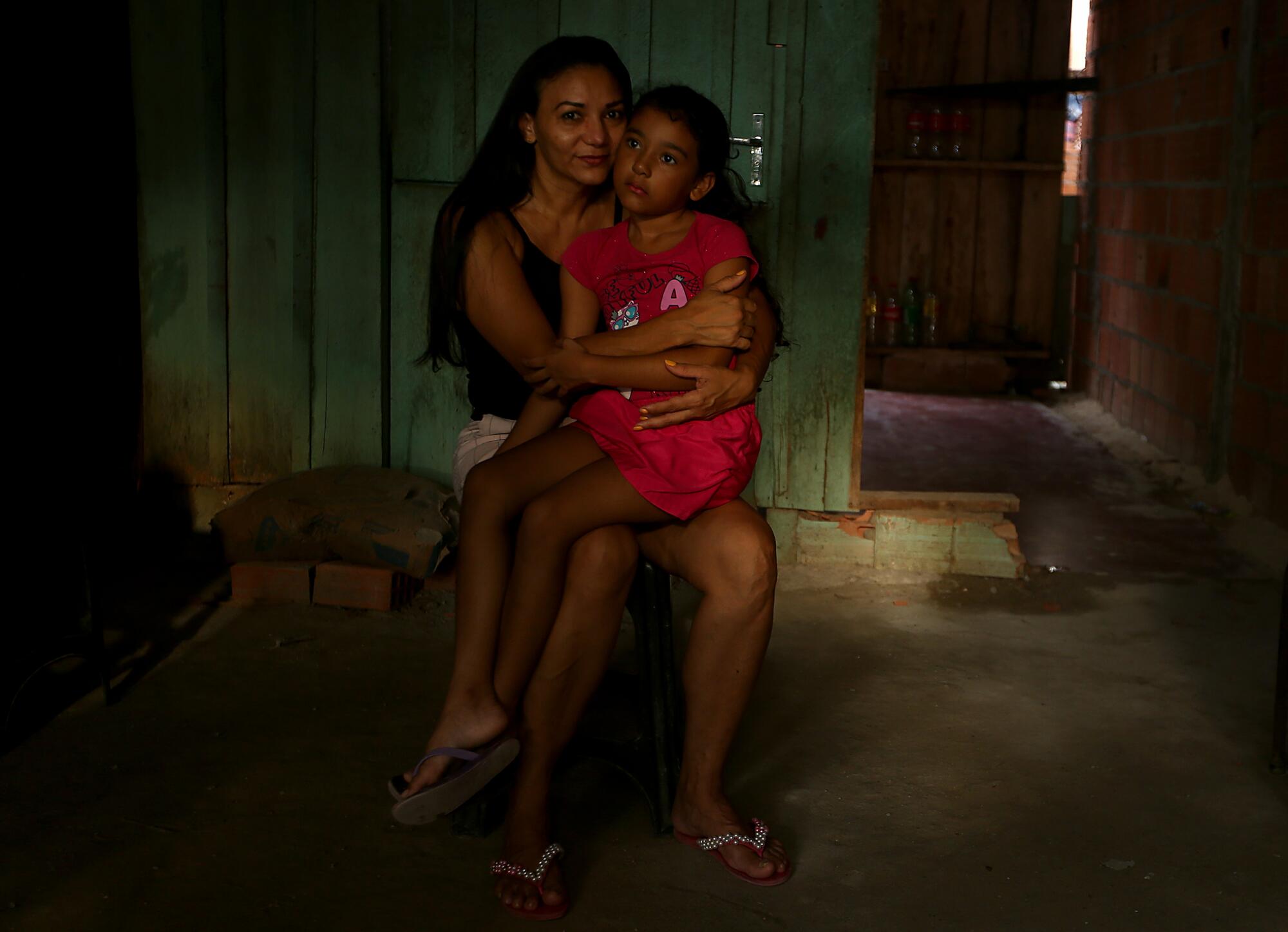
Others share that worry, including Nelcicleide Vasconcelos Barbosa Reis, 39, who works for a Catholic charity in an informal settlement about three hours north of Manaus.
The town, with a name, Rumo Certo, that translates to Right Path, sprung up from the jungle less than three decades ago and is now sandwiched between a series of cattle ranches and a lake formed by a hydroelectric dam.
Vasconcelos was busy making sure children didn’t fall behind while schools were closed when last year she, her husband and their 9-year-old daughter fell ill.
Her husband died in a Manaus hospital in December. Her daughter, Emanuelle, is shattered, spinning with anxiety when anybody mentions the word “COVID.”
“It’s unfair,” Emanuelle tells her mother. “Couldn’t God see that a kid needs her dad?”
Schools have been closed for well over a year and there’s no sign she’s going back.
During a recent party at the church, where Emanuelle floated around with a group of kids, including a toddler in a T-shirt emblazoned with a photograph of his father, who also died from COVID-19, Vasconcelos wiped away tears. She wondered if children’s lives would ever feel “normal” again.
“Either they will mature quickly or they will get lost,” she said.
::
The capuchin monkey was out cold, sprawled on a metal exam table as veterinarian Alessandra Nava gently searched its legs for a good vein.
The monkey, an illegal pet turned over to Brazil’s federal environmental protection agency, was malnourished and underweight, but Nava finally found a decent site for a draw on its thigh. Blood filled a vial, and as the monkey was carried back to its cage to sleep off the sedatives, Nava dropped the vial into a tank of liquid nitrogen — another sample for her database.
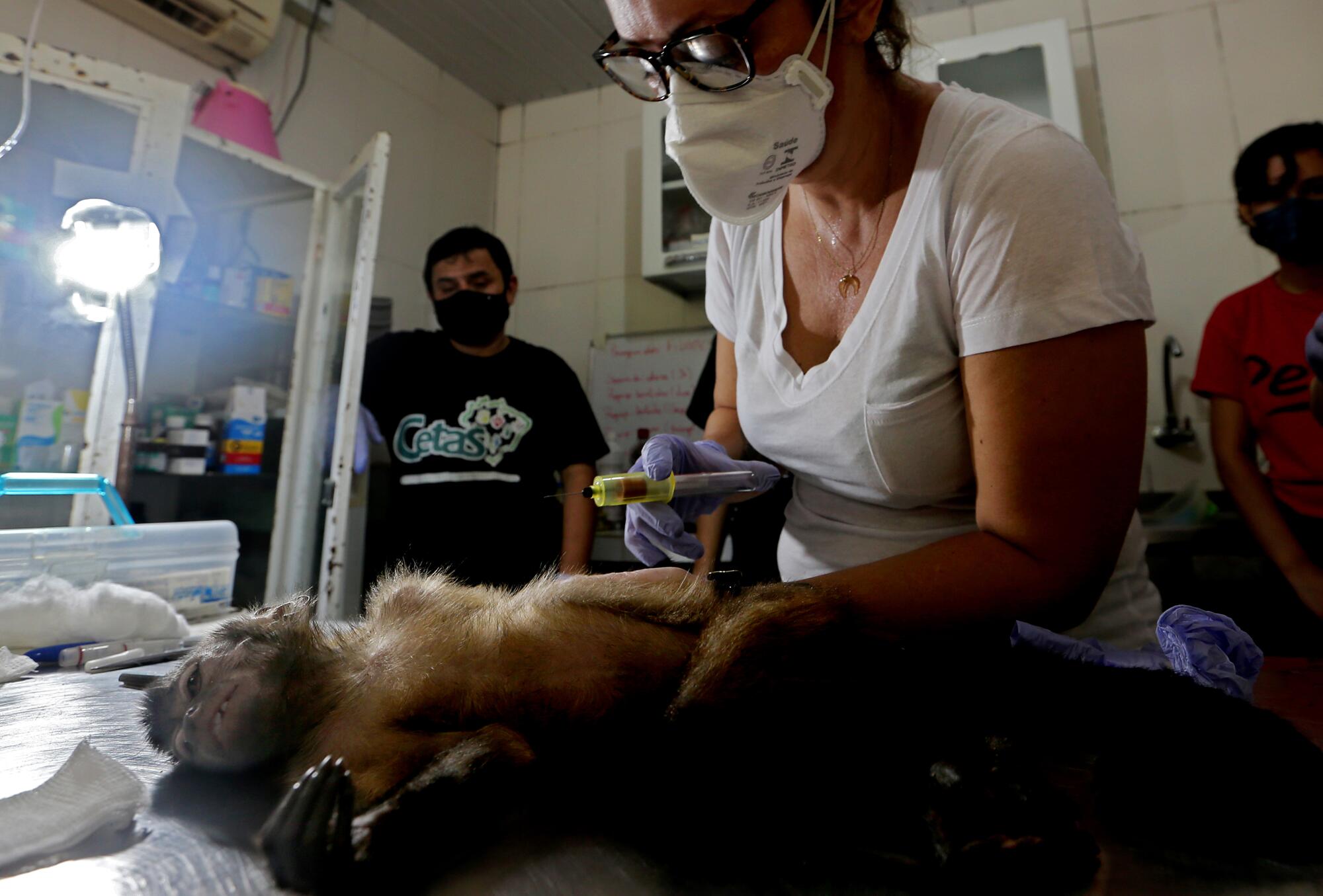
Nava is a virus hunter. As a researcher with Oswaldo Cruz Foundation, a government-run lab, she spends her days in and around Manaus taking samples from primates, rodents and bats. Those specimens are helping build up the institution’s biobank — a library of the viruses that are circulating among animals in the jungle.
Unlike traditional biobanks that store human samples for genomics and personalized medicine, these repositories serve a more universal purpose: surveilling viral circulation. The scientists know that while reservoir hosts like the monkey can harbor many viruses without ever falling ill, when those viruses make their way into humans, they can trigger a disastrous outbreak.
Scientists like Nava stalk and study the pathogens in hopes of outsmarting them. If a mysterious case of disease were to appear in a human, lab workers could sequence the virus’ genome and try to match it to a virus in the biobank, speeding up efforts to contain it.
There are similar projects in Thailand, Singapore and Malaysia — where scientists worry about a Nipah virus spillover — and the Congo basin, where Ebola and Marburg remain constant threats.
Internationally, the Global Virome Project is the most robust example: a massive research project that aims to catalog every virus that could threaten humans. Dennis Carroll, the researcher who runs it, believes that if such a data set had been available in the past, the coronavirus that spilled into humans some two years ago would have been identified much faster.
But many zoologists consider it too ambitious. Estimates suggest the project would cost about $1.6 billion over a decade to identify 75% of all the world’s viruses. And even a library of them all wouldn’t reveal which could be transmitted between humans. Some scientists think a wiser approach is convincing specific groups of people to adopt less risky behaviors: wet-market workers, mink farmers, chimpanzee hunters — and perhaps families living on the fringe of the forest, like Darah Lady’s.
Much of the research into zoonotic spillover has so far focused on Asia and Africa, but there is increasing attention on the Amazon. Brazil lost an estimated 5 million acres of its section of the forest in 2020, and scientists warn that section could be reduced by more than 40% by 2050. Outbreaks of zoonotic disease have increased globally in the last 30 years, and the virus that will mutate to cause the next one, though perhaps undetected, is already out there.
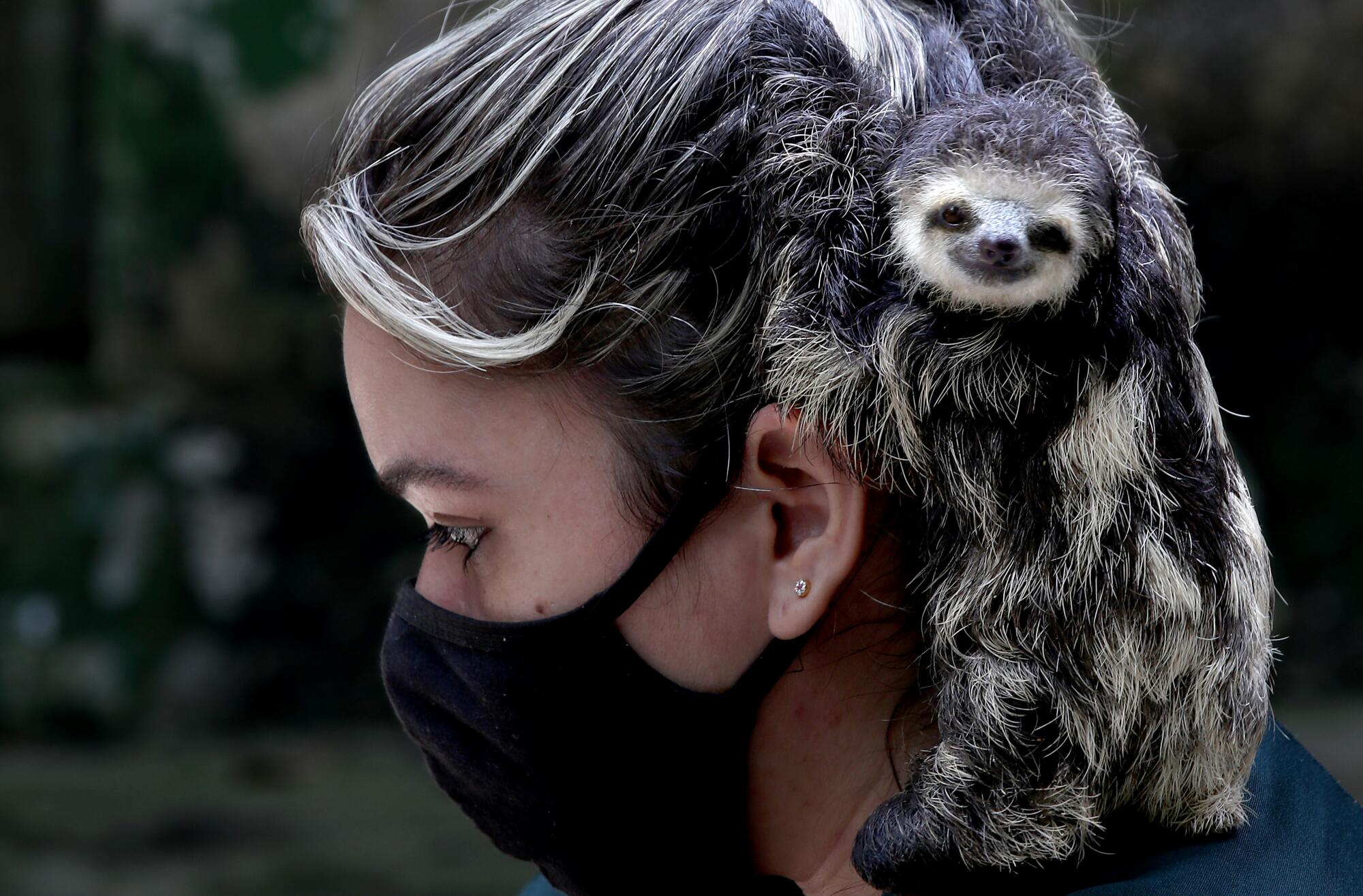
“They cut down a chunk of pristine forest and build a shopping mall, and people think it’s progress,” Nava said. “But when you do that, you’re leaving an entire group of animals without a home.”
Nava, who has a young daughter, has been adding solar panels and cisterns to her house to make her family more self-sufficient in the face of future disasters. As she commutes around Manaus, with its urban sprawl ever encroaching on the forest around it, she thinks about her kid: “What kind of planet are we leaving her?”
If people truly care about avoiding future pandemics, she said, they will realize that the best approach is not her own — trying to learn about viruses before they take root in humans — but to stop their spread altogether.
“It’s not about searching for the next virus,” she said. “We have to stop deforestation right now.”
::
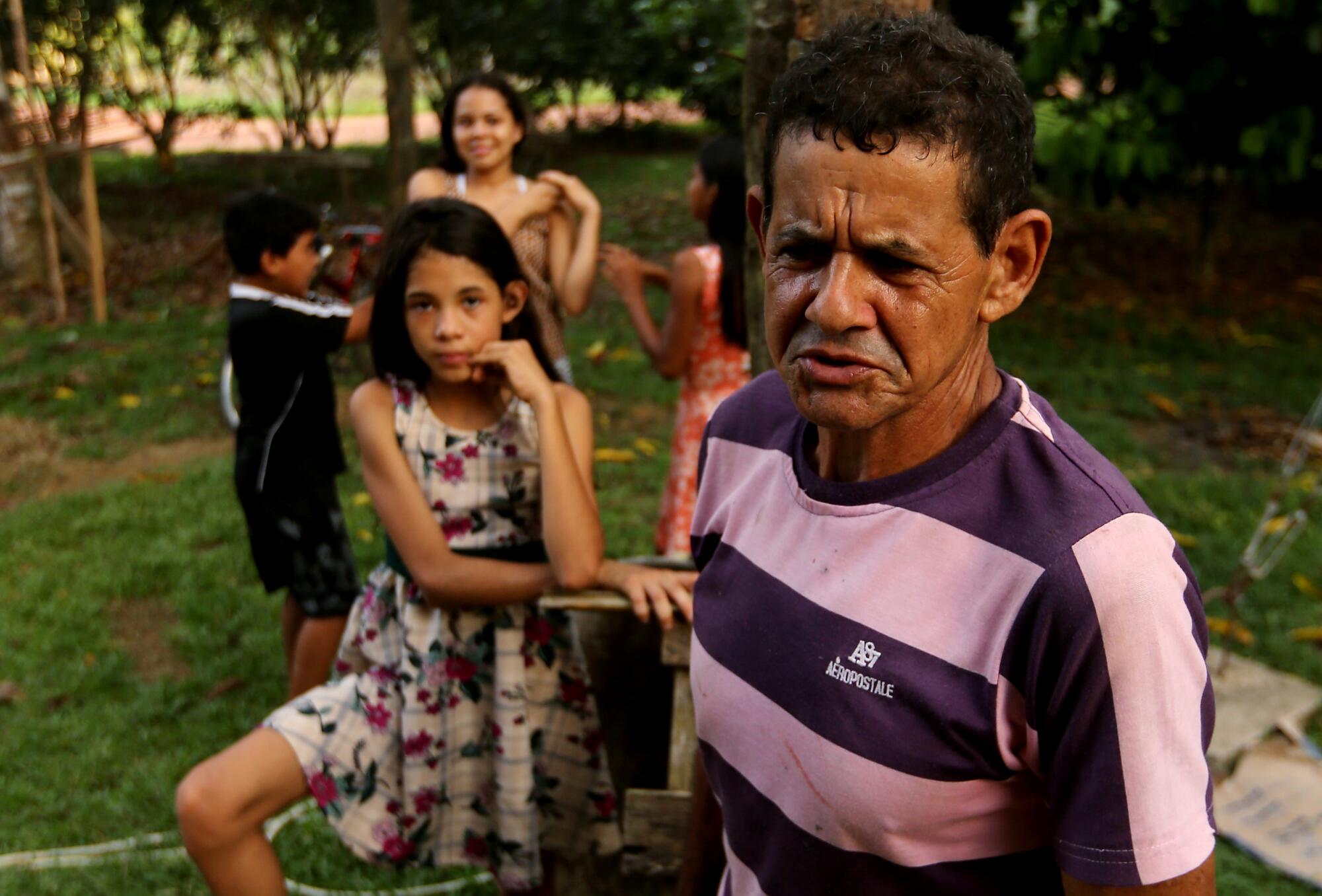
Oliveira bristles at suggestions that families like his are doing something wrong by expanding into the jungle.
He supports Brazilian President Jair Bolsonaro, a far-right firebrand who has allowed an increase of logging, mining and cattle farming in the Amazon — activities that scientists say are linked to the emergence of infectious disease.
Oliveira says if scientists want Brazil to stop cutting down the rainforest, they should compensate those living there. “Pay me to preserve it and I will preserve it,” he said on a recent morning, sipping coffee in an open-air gazebo with his wife and his wife’s mother while Darah Lady sat in Sunday school at the community’s little church.
“Coming from the outside, you want the forest to remain standing,” he said. “That’s wonderful. But I live here in the forest. And I don’t survive on leaves and lizards.”
Around him were signs of how the growth of his family’s compound has already altered a land that less than a century ago was untouched and pristine. A paved road built recently is already lined with small stores and cattle ranches. Nearby, construction workers are preparing to clear more forest to build a hospital. Even where the lush green is relatively undisturbed, thick electrical lines stretch over the canopy, buzzing day and night.
The kids trickled out of the church, Darah Lady clutching a Bible. She accepted kisses from all the adults — including her grandmother Iracema, who decades ago pushed back the forest to make a home — then sat down with her cousins for a breakfast of fruitcake.
More than her elders, Darah Lady seemed to intuit the nuance of deforestation. Just days before, she had played on a lot that was being cleared.
It had once been a dense universe of life — towering trees, cacophonous birds, legions of rare insects and animals. But now it looked as if it had been flattened by a bomb, cleared of any valuable timber and blackened by a still-smoldering fire.
“I get kind of sad,” Darah Lady said. “Because, like, the forest is something I’ve loved since I was little. And they’re deforesting, right? It’s destroying nature.”
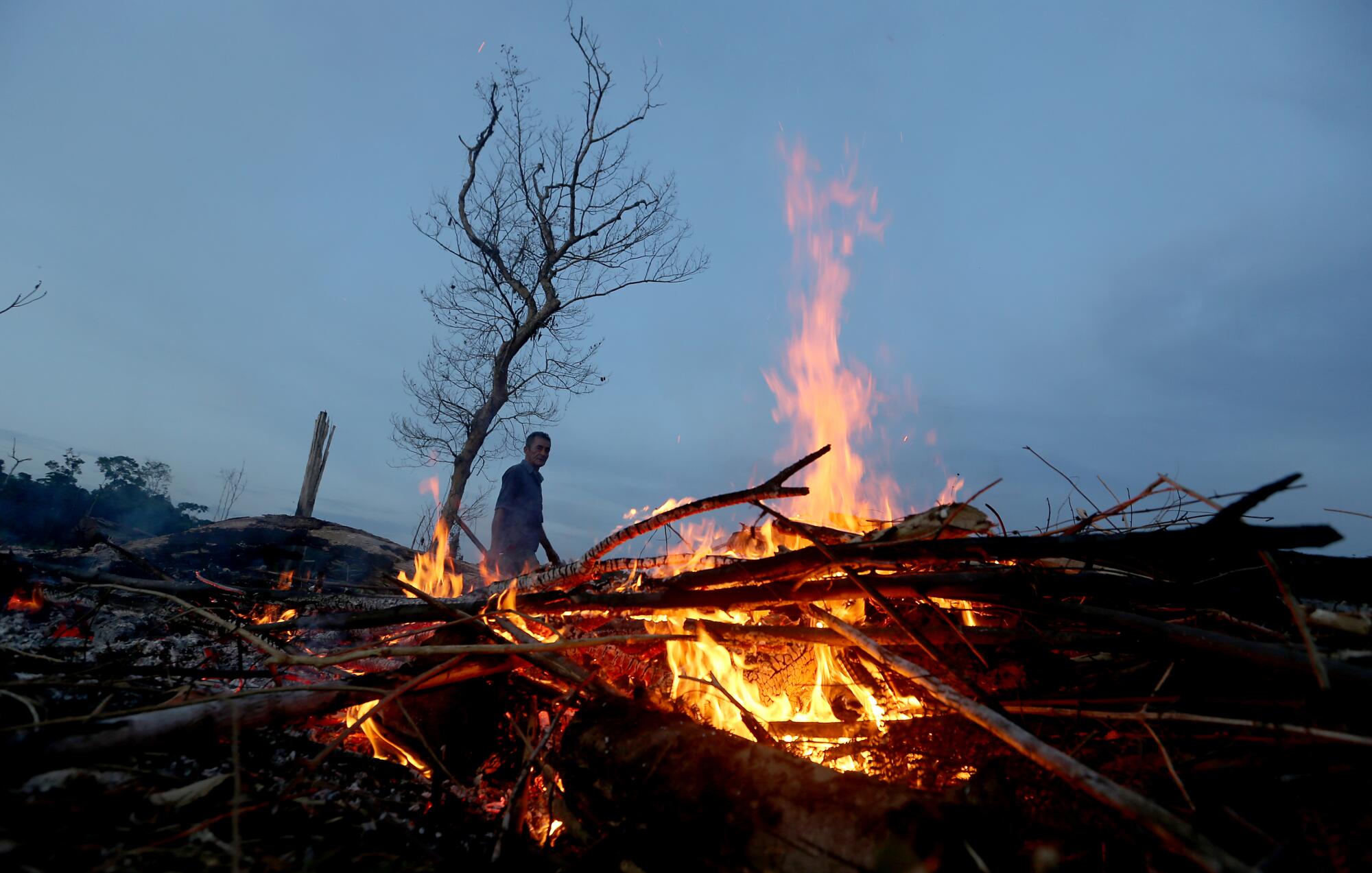
“But it’s also going to help,” she said, exhibiting a child’s grasp of slash-and-burn agriculture. “This land they are burning, these trees, the nutrients from what they burn will go into the soil. And it will help to plant new things — like orange trees, guava trees — and people can build houses.”
On this Sunday morning, as she and her family finished up and retired to their home, smoke from farmers clearing more land again filled the sky, a sign of both progress and peril. Darah Lady was so used to it, she barely noticed.
Times staff writer Linthicum and special correspondent Ionova reported from Maruaga. Staff writer Baumgaertner reported from Los Angeles.
(This is the sixth in a series of occasional stories about the challenges young people face in an increasingly perilous world. Reporting was supported by a grant from the Pulitzer Center.)
More to Read
Sign up for Essential California
The most important California stories and recommendations in your inbox every morning.
You may occasionally receive promotional content from the Los Angeles Times.
